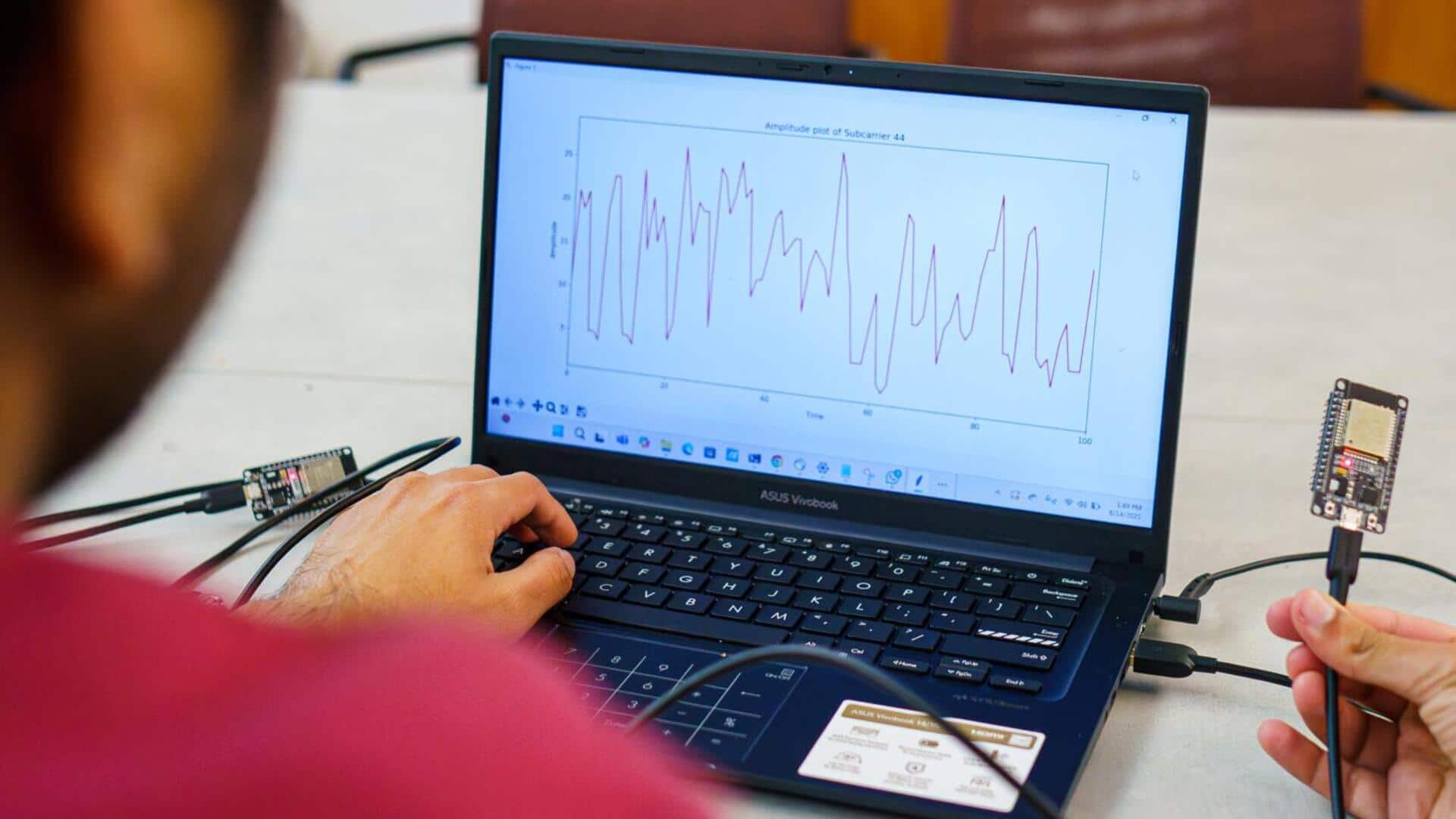
Forget wearables! Wi-Fi can now measure your heart rate
What's the story
Engineers at the University of California, Santa Cruz, have developed a revolutionary method to measure heart rate using household Wi-Fi devices. The technique, dubbed "Pulse-Fi," eliminates the need for traditional wearable devices like smartwatches or hospital-grade machinery. It uses low-cost Wi-Fi devices and a machine learning algorithm to accurately measure heart rates with state-of-the-art precision.
Innovation
How Pulse-Fi works
The Pulse-Fi system employs a Wi-Fi transmitter and receiver that runs a signal processing and machine learning algorithm. This algorithm is trained to identify even the smallest changes in signals caused by human heartbeats, filtering out all other environmental factors or activities like movement. The researchers conducted experiments with 118 participants and found that after just five seconds of signal processing, they could measure heart rate with clinical-level accuracy.
Versatility
The setup cost was under $50
The Pulse-Fi system worked perfectly regardless of the position of the equipment in the room or the person whose heart rate was being measured. This was tested on 118 participants in 17 different body positions each. The results were obtained using ultra-low-cost ESP32 chips, which retail between $5 and $10, and Raspberry Pi chips that cost around $30.
Distance factor
System performed well with person 10 feet away from hardware
The team also found that their system performed well with a person nearly 10 feet away from the hardware. This was made possible by the machine learning model, which ensured that distance didn't affect performance. "What we found was that because of the machine learning model, that distance apart basically had no effect on performance, which was a very big struggle for past models," said Pranay Kocheta, one of the researchers.
Data collection
Training the machine learning model
To make their heart rate detection system work, the researchers had to train their machine learning algorithm to distinguish the faint detections in Wi-Fi signals caused by a human heartbeat. They found no existing data for these patterns using an ESP32 device, so they created their own dataset. The team also used a dataset produced by Brazilian researchers using a Raspberry Pi device, which has the largest existing dataset on Wi-Fi for heart monitoring.
Expansion
Next steps for researchers
The researchers are now looking to expand their technique to detect breathing rate along with heart rate. This could be useful for detecting conditions like sleep apnea. Unpublished results have shown promising results for accurate breathing rate and apnea detection using this innovative technology.